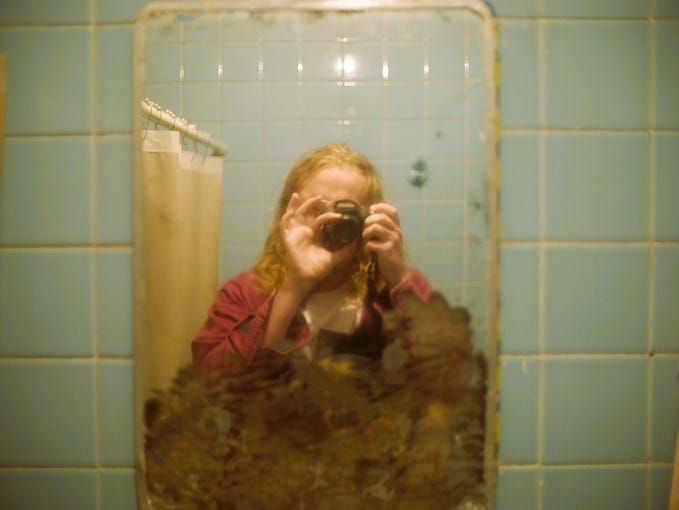Freedom Over Missing Out
This article is part one of a four-part series. Read the next article in this series.

December is here in all its fastidious glory. This season is truly the most euphoric and harried time of the year, when glittering holiday parties and dazzling displays of nostalgia admix with frenzied shopping and forced family fun to create a perfect storm of anxiety. There’s so much to do. You can’t do it all. Nobody can.
By now, even children know the meaning of FOMO, what TIME magazine calls “the uneasy and sometimes all-consuming feeling that you’re missing out — that your peers are doing, in the know about, or in possession of more or something better than you.” If we’re living in the age of anxiety, then the 40 days between Thanksgiving and New Year’s Eve are the high holy days of FOMO.
This malady is especially challenging for young artists and designers, who are acutely aware of their own moods and emotional states. In my four decades of service as academic dean, provost, and now president of one of the world’s preeminent arts universities, I can attest that student anxiety is nothing new. And yet, according to a recent study by the Association for University and College Counseling Center Directors, anxiety is now the number one reason college students seek campus counseling services — having supplanted depression every year since 2009.
The good news is, we’re talking about it.
Not long ago, I spoke with Target brand strategist, designer, and SCAD alumna Abby Hyslop, who brought up her own concerns about this highly millennial form of anxiety, especially as it relates to the marriage of work and creativity so essential to the lives of young art and design professionals. A little fear is healthy and can summon the warrior within, but what to do when a surfeit of FOMO cripples our social plans and creative ambitions?

Recent SCAD graduate Tori Gonzalez, an interior designer with West Palm Beach firm Marzipan, understands the nagging pull of anxiety all too well: “In a creative field, there are no set formulas or parameters for our work,” she says. “At the end of the day, there’s less to hide behind. What you create is a reflection of yourself.” After graduation, as she sought a career in furniture design, Tori came to terms with her post-collegiate reality. “Career-wise, there’s an anxiety with keeping up,” she reports. “As a student, I was surrounded by the newest, innovative ideas. Now, there’s more pressure to stay on top of current trends.”
Ms. Gonzalez is not alone. Chene Walz, a counselor with SCAD counseling and student support services, specializes in the needs of young artists. She understands that this elite group has “a more deeply felt experience (and freer expression) of emotions,” which makes them more susceptible to disruptions in their meaning-making process.
This holiday season and throughout the New Year, what might ambitious young artists and designers do to diminish FOMO and increase happiness and creative productivity? The first step is to refashion anxiety into its more generous doppelganger. Meet the more charitable twin sister of anxiety: ambiguity.
At the root of FOMO is fear of the unknown. Have I missed the perfect opportunity? Have I chosen poorly in the use of my time? The honest answer to these questions is: Who knows? Nobody, that’s who.
We live in a world that values certainty over surprise — an atmosphere of unceasing data flow, statistics, and news. FOMO’s low-level anxiety is about the impossibility of knowing it all, seeing it all, doing it all. For many people, especially young adults, the sheer unknowability of every answer breeds discomfort. And yet, ambiguity, found in all art and life, is the friend of the artist.
Da Vinci was the master of depicting ambiguity, as seen in Mona Lisa’s knowing smile. David Lynch makes no answers easy in Twin Peaks: The Return, and neither does Shirley Jackson, in her captivating, discomfiting novel We Have Always Lived in the Castle. Great works of art invite us to rest comfortably in the not-knowing, equipping us for a life of many possibilities.
In a recent study, one’s enjoyment of art was directly linked to higher reported levels of ambiguity, where participants took genuine pleasure in the open questions generated by a given work. In accepting ambiguity, one accepts a world of surprises. In this realm, one can dwell in the beauty of the ordinary and the power of quotidian human experience. In other words, to stem the tide of your own FOMO, read a book. Visit a gallery. Make something. Learn to embrace the ambiguity of not-knowing and not-doing. There’s a freedom in not needing to know all the answers.
In my next post, I’ll discuss two practical techniques for opening yourself up to ambiguity and combating the relentlessness of FOMO.








